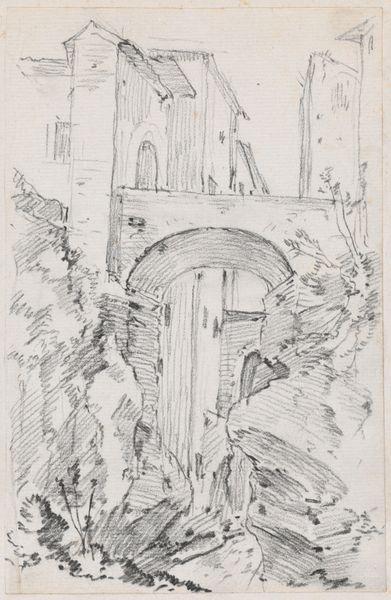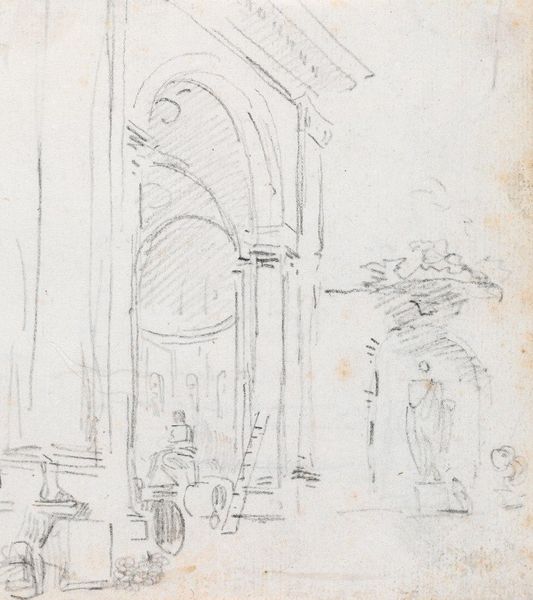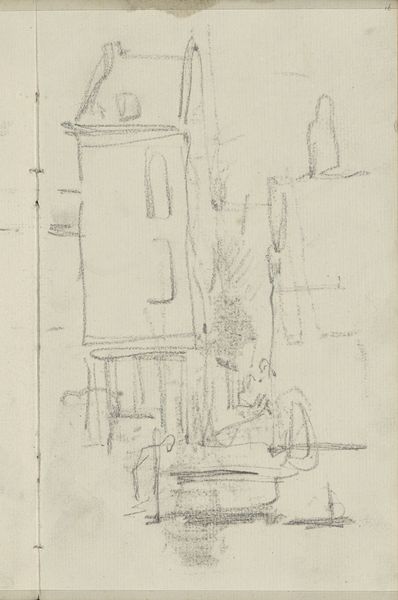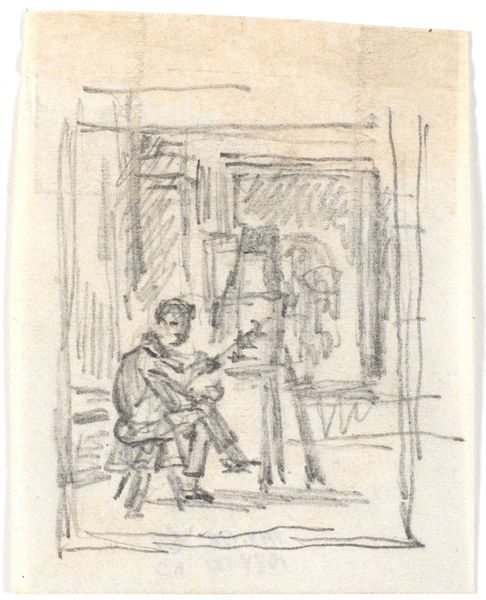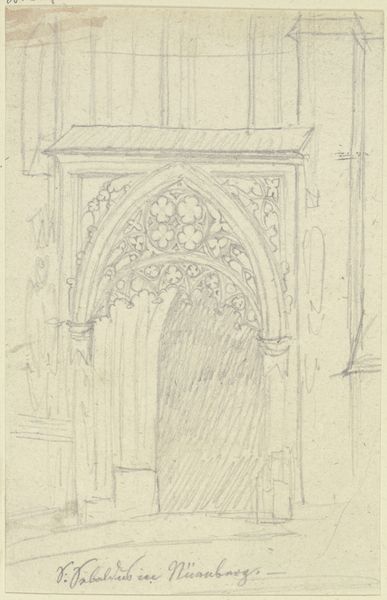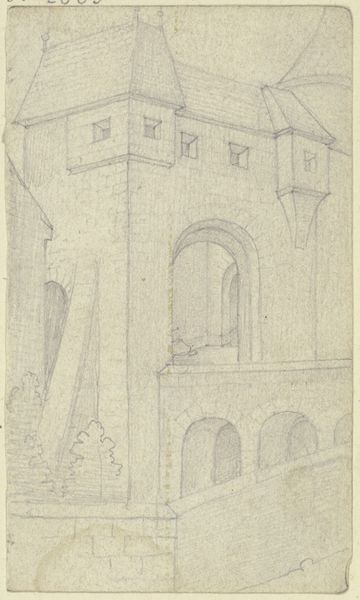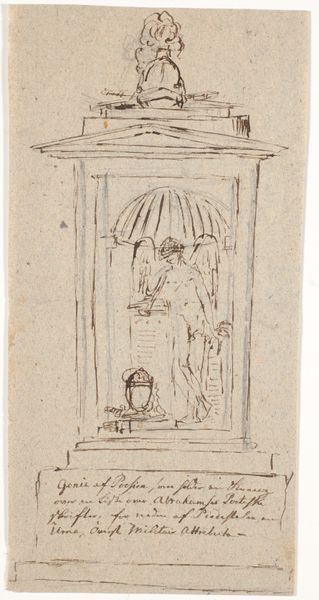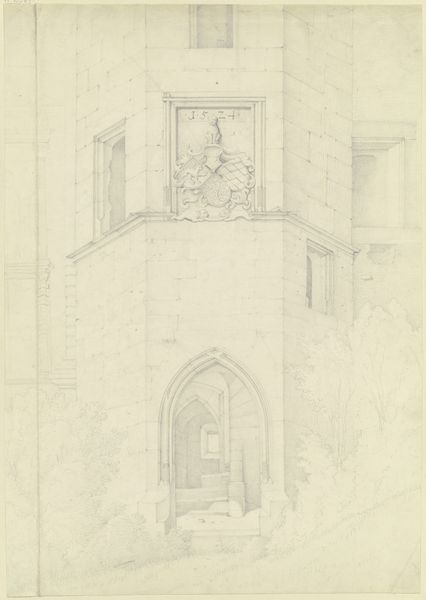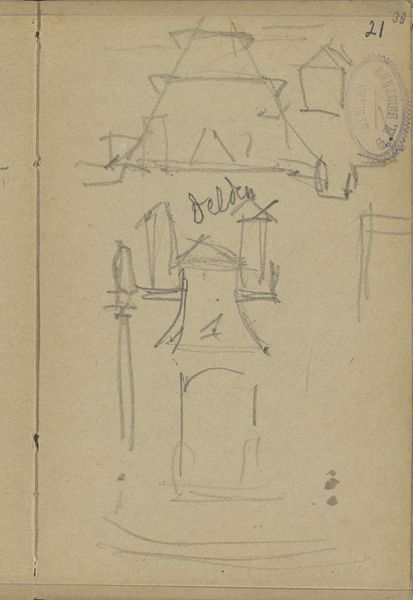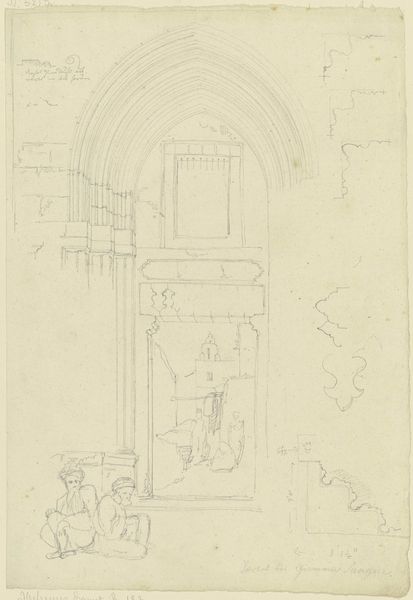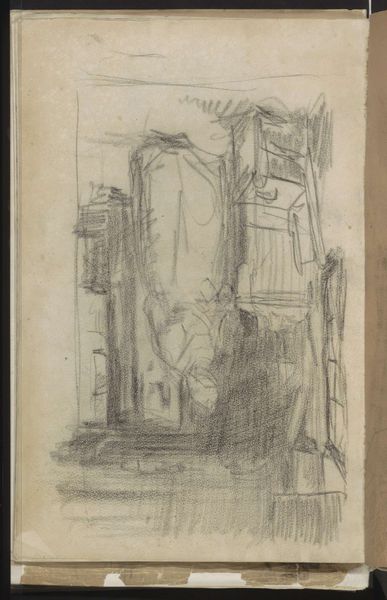![Figures on a Monumental Interior Stairway [recto] by Hubert Robert](/_next/image?url=https%3A%2F%2Fd2w8kbdekdi1gv.cloudfront.net%2FeyJidWNrZXQiOiAiYXJ0ZXJhLWltYWdlcy1idWNrZXQiLCAia2V5IjogImFydHdvcmtzLzM2NDNhYjg5LWJhZWItNDA5Yi1hYTRiLWQ2YmNmYWViZGM4ZC8zNjQzYWI4OS1iYWViLTQwOWItYWE0Yi1kNmJjZmFlYmRjOGRfZnVsbC5qcGciLCAiZWRpdHMiOiB7InJlc2l6ZSI6IHsid2lkdGgiOiAxOTIwLCAiaGVpZ2h0IjogMTkyMCwgImZpdCI6ICJpbnNpZGUifX19&w=3840&q=75)
Figures on a Monumental Interior Stairway [recto] c. 1754 - 1765
0:00
0:00
drawing, paper, pencil
#
drawing
#
neoclacissism
#
landscape
#
perspective
#
figuration
#
paper
#
pencil
#
cityscape
#
history-painting
#
academic-art
Dimensions: Overall: 12.2 x 8.8 cm (4 13/16 x 3 7/16 in.) support: 21.5 x 15.6 cm (8 7/16 x 6 1/8 in.)
Copyright: National Gallery of Art: CC0 1.0
Art Historian: We’re looking at “Figures on a Monumental Interior Stairway [recto],” a pencil drawing on paper attributed to Hubert Robert, dating from about 1754 to 1765. Curator: There’s a haunting quality to this drawing. The skeletal structure of the architecture is emphasized by Robert's spare use of line. It feels immense, like a stage set awaiting a grand tragedy. Art Historian: Absolutely. Robert was fascinated with ruins and architectural fantasies, reflecting the period's obsession with the grandeur and the decline of classical civilizations. Note the figures; they are dwarfed by the scale of the architecture. They symbolize the ephemeral nature of human existence against the backdrop of history. Curator: Yes, and that contrast between the monumental architecture and the rather loosely rendered figures highlights the drawing’s spatial depth. Robert manipulates perspective, almost exaggerating it to pull the viewer into this imagined space. It is very effective in creating this visual metaphor. Art Historian: Think about the statue, perched atop the landing. Though faintly drawn, statues represented virtues, philosophies – legacies that these tiny figures are now inheriting, wandering among these monumental buildings. The stairs are a metaphor too, right? They're symbols of ascension, either socially, intellectually, or even spiritually, echoing across cultures from ancient myths to contemporary philosophies. Curator: I find myself more drawn to how the light seems to catch on the arches above. The way the artist sketches shadows with such economy emphasizes the drawing's texture. Look at those delicate hatch marks implying shadow – creating a play of light and dark which gives shape and form with a structural feeling that defines this piece. Art Historian: It all accumulates into a rumination on memory and the echoes of the past resonating through the built environment. Each element, each shadow, acts as a vessel, containing collective and individual memories that shape our present. Curator: This artwork exemplifies how fundamental elements such as line and composition allow one to imagine what exists beyond its architectural borders and find greater meanings in those relationships and scale differences. Art Historian: Hubert Robert really captured something essential here. Curator: Indeed. I walk away considering how structure can communicate ideas.
Comments
No comments
Be the first to comment and join the conversation on the ultimate creative platform.
